![The Mohican Board! [Bumppo's Redux!] The Mohican Board! [Bumppo's Redux!]](images/wwwboard.gif) |
|
| Author |
 Topic Topic  |
|
|
James N.
Colonial Militia
   

USA

Bumppo's Patron since [at least]:
October 24 2007
Status: offline
|
 Posted - October 29 2012 : 3:47:23 PM Posted - October 29 2012 : 3:47:23 PM



|
When the British and Hessians under General William Howe entered Philadelphia on Sept. 26, 1777, they may have congratulated themselves the campaign was over and the Rebellion surpressed; unfortunately for them, George Washington had other ideas. Ever-agressive despite long odds and poor supplies, he decided to do what they least expected - attack them in their camps north of the city at the hamlet called Germantown. The foggy morning of Oct. 4, 1777, his army set out in four columns: Near the river John Armstrong's Pennsylvania militia were only supposed to make a "demonstration" to the edge of Wissahickon Creek, drawing British attention there; the main attack consisting of two columns under John Sullivan and "Lord Stirling" advanced on either side of the Germantown Road directly on Lord Cornwallis' main encampment; and a fourth under Nathanael Greene was to pass around the British right and get in Cornwallis' rear.
Unfortunately even this relatively simple plan was too much for Washington's generals and the army as a whole, especially in the thick fog. Briefly stated, Armstrong's militia stopped at the creek and played no part at all in the battle. Sullivan and Stirling's attack was at first spirited and drove the British out of their camps, a first in this war, and one to two miles toward the city in confusion until the attack lost momentum. Greene's column was nowhere to be seen, having moved slowly through the fog. Soon the success became unhinged however, as British reenforcements from Philadelphia led by Howe in person arrived, stopping the attack altogether, at the same time one of Greene's just-arriving brigades led by Adam Stephen collided in the fog with Anthony Wayne's brigade in an incident of "friendly fire". After that the Americans, now running low on ammunition, began to drift away from the battle towards the rear until a general retreat ended it altogether; the stunned British did not pursue.
Image Insert:
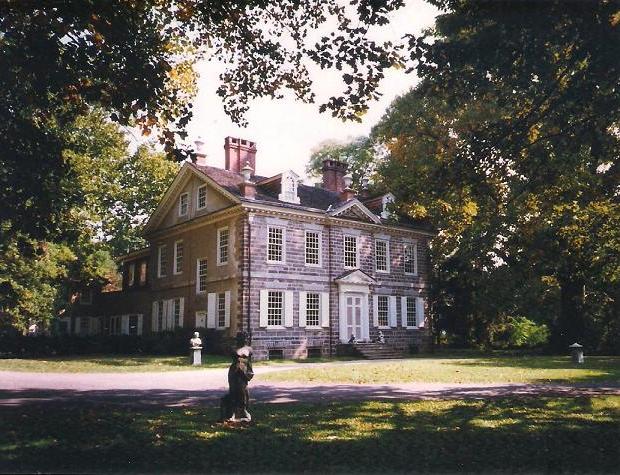
85.55KB
Germantown today is a quiet, somewhat shabby, and largely minority area near downtown Philadelphia, whereas during the battle it was five miles outside the city and a place where the wealthy had built homes like that of Tory Benjamin Chew's estate, Cliveden ( above ), scene of serious fighting. Since 1777, the city has spread, covering all the other sites of the battle leaving the action here all most today remember about it. Then surrounded only by farmland, today Cliveden sits in a beautiful park-like setting and is maintained by the National Trust for Historic Preservation. Along Germantown Avenue are several other historic houses like Grumblethorpe below, and the Federal-style Deshler-Morris House, at bottom where then-President Washington spent the dangerously hot and fever-ridden summers of 1793 and 1794 while Philadelphia served as the nation's capital.
Image Insert:
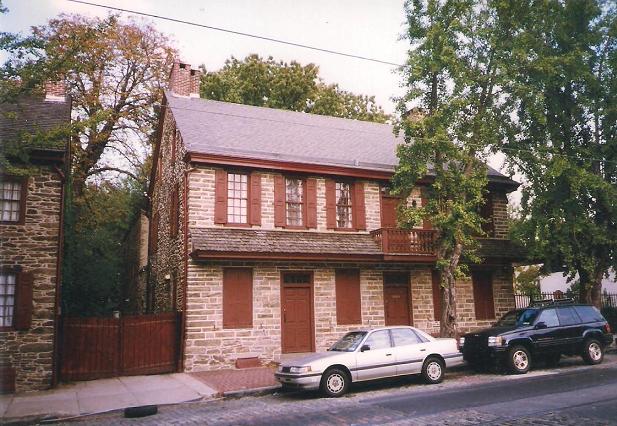
73.64KB
Grumblethorpe, built in 1744.
Image Insert:
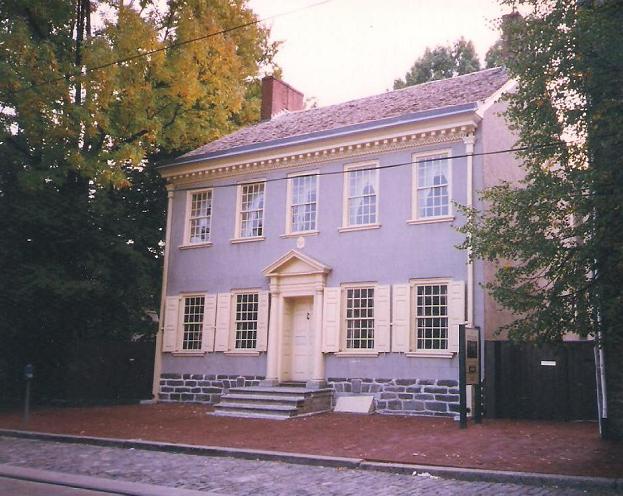
65.59KB
The Deshler-Morris House is today administered as a unit of Philadelphia's Independence National Historical Park.
|
|
report to moderator
|
|
|
James N.
Colonial Militia
   

USA

Bumppo's Patron since [at least]:
October 24 2007
Status: offline
|
 Posted - October 29 2012 : 5:21:22 PM Posted - October 29 2012 : 5:21:22 PM




|
I visited Cliveden on Saturday Oct. 4, 1997, the 220th anniversary of the battle, and will use photos of the reenactment to explain the action that took place here that affected the outcome of the Battle of Germantown. Here British and Hessians have their pre-battle safety inspection:
Image Insert:
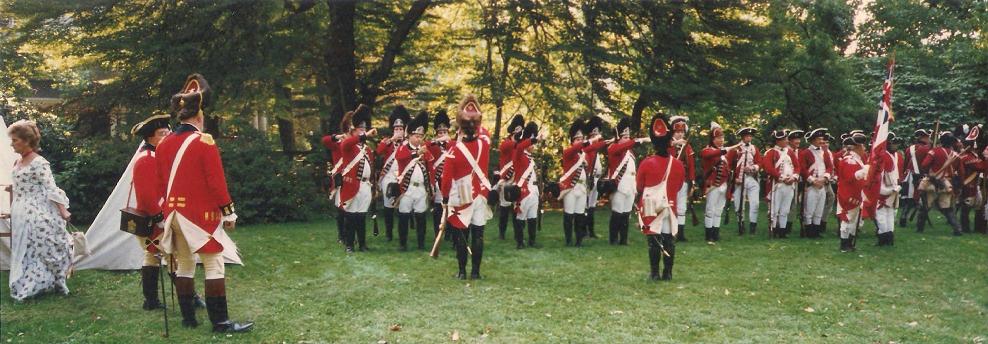
88.19KB
Image Insert:
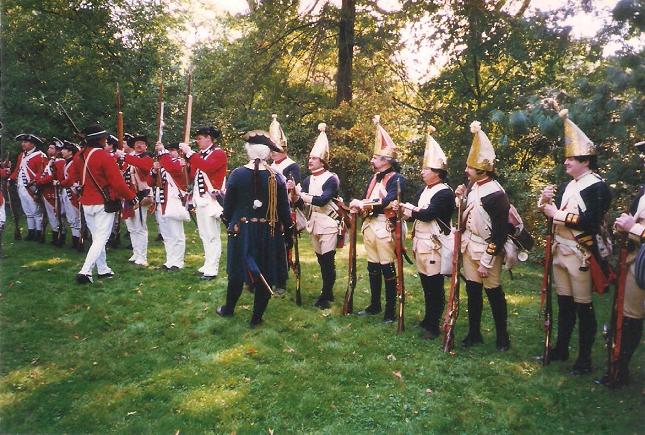
84.58KB
Though there were no Hessian troops in this phase of the battle, they made a colorful addition to the reenactment.
The British force under Lord Charles Cornwallis was encamped up and down the Germantown Road, including the 40th Regiment of Foot, some 200 strong, which was directly around and behind the Chew House prior to the battle. Unlike the actual day, Oct. 4, 1997 was clear and even in the morning unseasonably hot amd sultry as the shooting started on modern-day Germantown Avenue.
Image Insert:
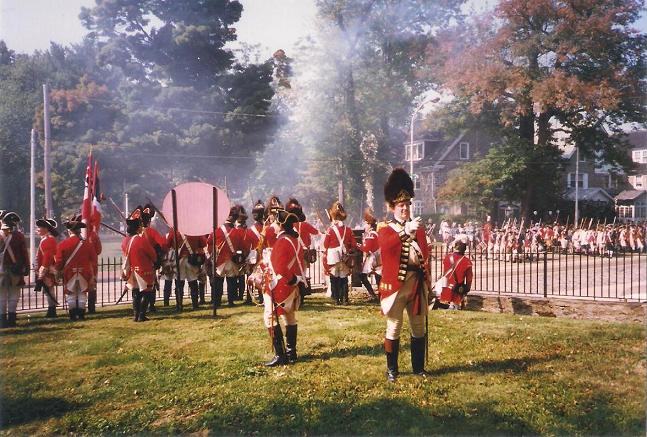
78.77KB
The British occupy the Cliveden grounds; note the Americans outside formed up in the street at the right preparing to attack.
Image Insert:
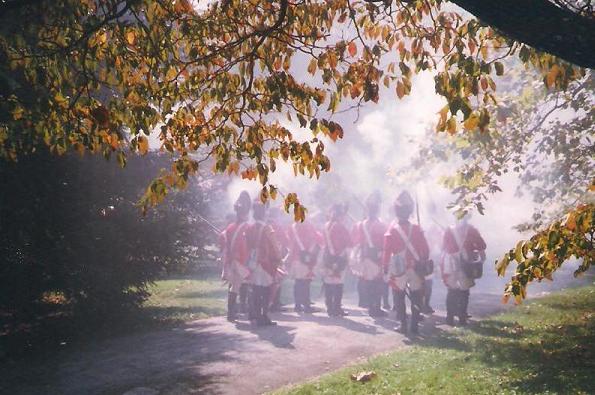
55.06KB
Reenactors representing the 40th Foot withdraw down the short lane toward the main house.
Image Insert:
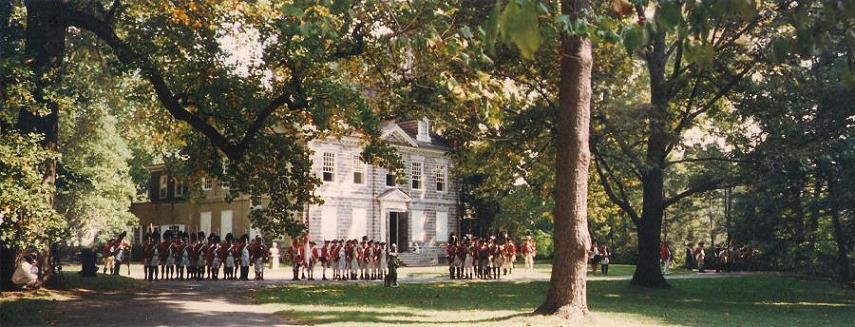
83.44KB
The British form up prior to taking position inside Cliveden; note that the stout first-floor shutters have all been closed to prevent any Americans from trying to get in that way!
About 100 men of the 40th Foot managed to enter the house along with their commander, Lt. Col. Thomas Musgrave, and barracaded the doors with the expensive furniture. In one of the several errors of the day in this confused battle, self-taught artillery Gen. Henry Knox advised the Commander-in-Chief it would be a mistake to leave a "fortified castle" in their rear while the rest of the army pushed the British away to the south. When an emissary sent to demand their surrender was shot down by the defenders Washington ordered the building shelled by Knox's artillery and captured by a coup de main assault. It would have been far wiser to ignore this handful of Redcoats, merely surrounding Cliveden to prevent their escape to rejoin the now-receeding battle. Instead the assaults here did nothing but contribute to the confusion and growing American casualty lists as Musgrave and his men fought fiercely, suspecting that even if they did surrender they would suffer retribution for Wayne's men bayonetted at Paoli. Sounds of firing coming from here well in their rear unnerved Sullivan's men and contributed to Wayne's brigade of Stirling's Division turning and firing into Stephen's Brigade of Greene's Division as it approached from an unexpected direction.
Image Insert:
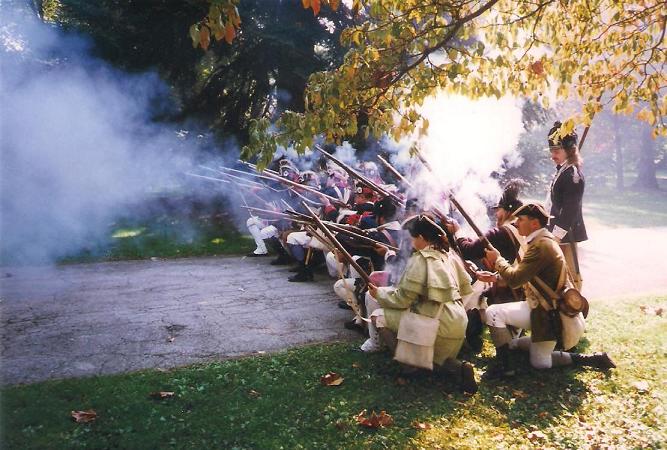
70.64KB
American riflemen approach the house, now turned into a fortress. I thought the British and Hessian reenactors presented a better appearance overall, since they were less plagued by inaccuracies like mustaches, sideburns, and beards, not to forget the "rifleperson" in the foreground wearing the green hunting shirt!
Image Insert:
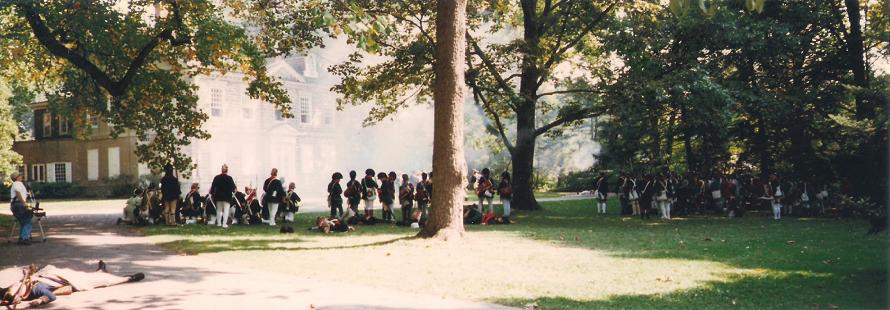
70.17KB
Above, Americans approach the house under heavy fire from the upstairs windows while some of them attempt to batter in the stout front doors; below, having failed in the attempt they flee ( center ), even though additional troops arrive.
Image Insert:
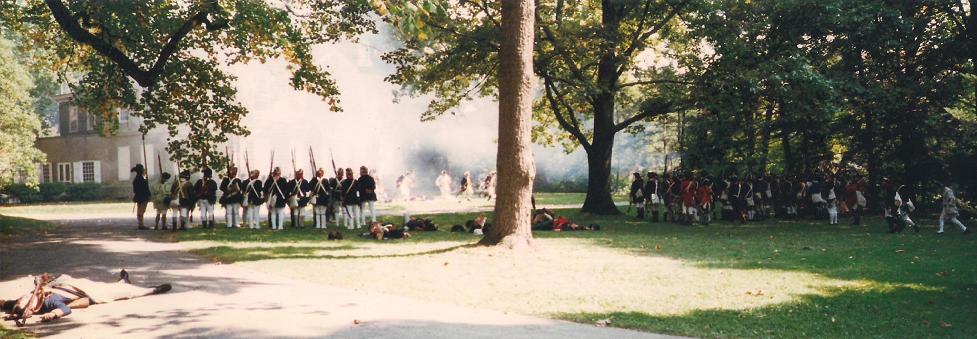
82.41KB
When the rest of Washington's army began to retreat, those engaged here had no choice but to abandon the attempt to storm Cliveden and retreat along with the rest. Though a failed battle, Germantown had several long-range consequences for the success of the Revolution. For one, Washington sacked his old friend from French and Indian War days, Gen. Adam Stephen, who was said to have been drunk at the time his troops collided with Anthony Wayne's precipitating the collapse of the American attack. His brigade of Virginians was instead entrusted to Maj. Gen. the Marquis de La Fayette, hero of Brandywine and now no longer merely a volunteer general without a command. More importantly, the daring attack on a larger force, coming as it did so soon after the Brandywine debacle, demonstrated to the European powers that Washington hadn't given up and that the Revolution was still very much alive. Germantown and the surrender of Burgoyne's force in upstate New York at Saratoga convinced the French to join in the war, eventually securing American independence.
|
report to moderator  |
|
|
James N.
Colonial Militia
   

USA

Bumppo's Patron since [at least]:
October 24 2007
Status: offline
|
 Posted - September 26 2018 : 1:10:20 PM Posted - September 26 2018 : 1:10:20 PM




|
Image Insert:
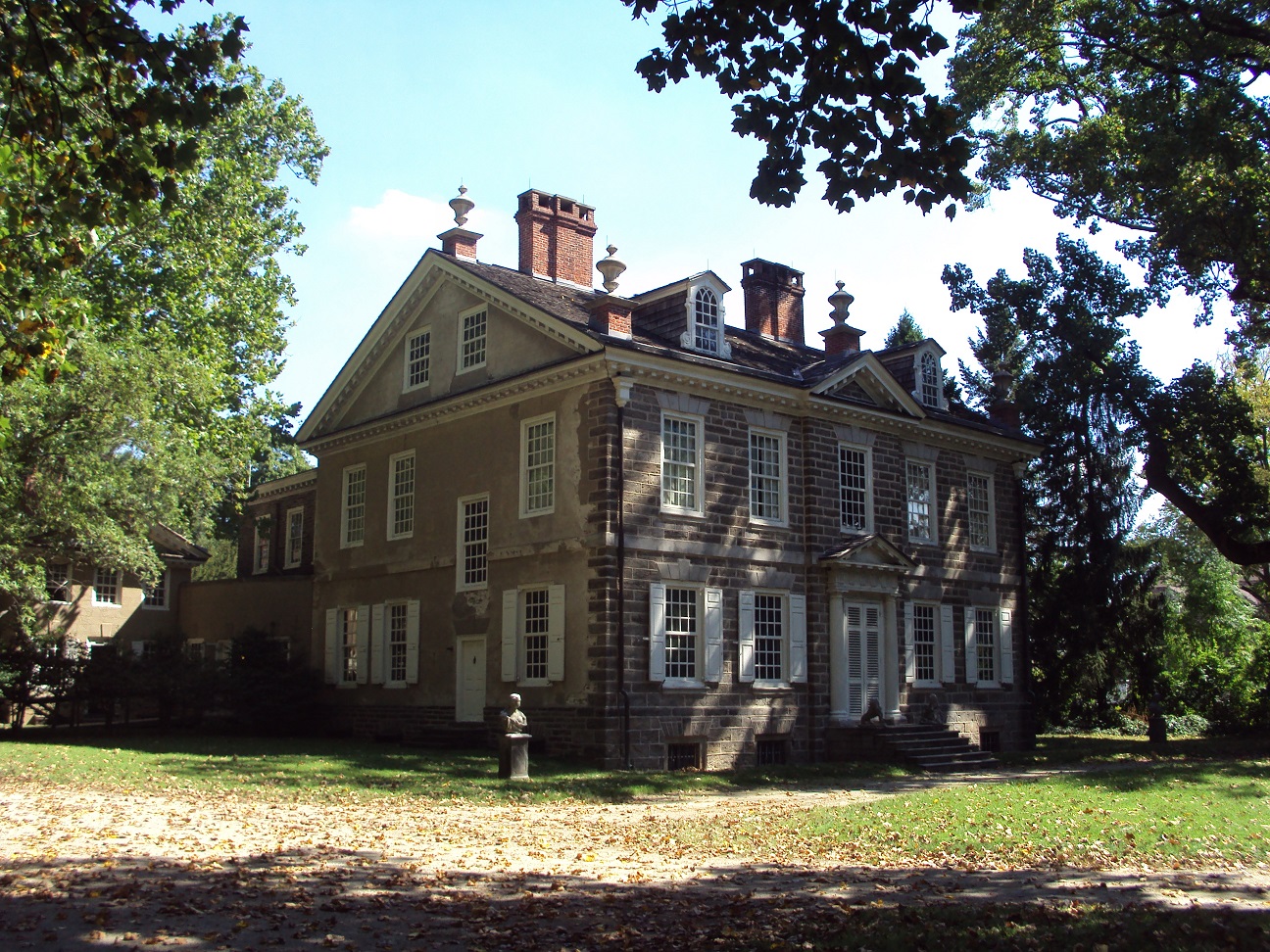
712.73 KB
In September, 2015 I revisited Cliveden together with an old friend while seeing the Colonial and Revolutionary sights in and around Philadelphia; here are some additional photos of the manor from that trip.
Image Insert:
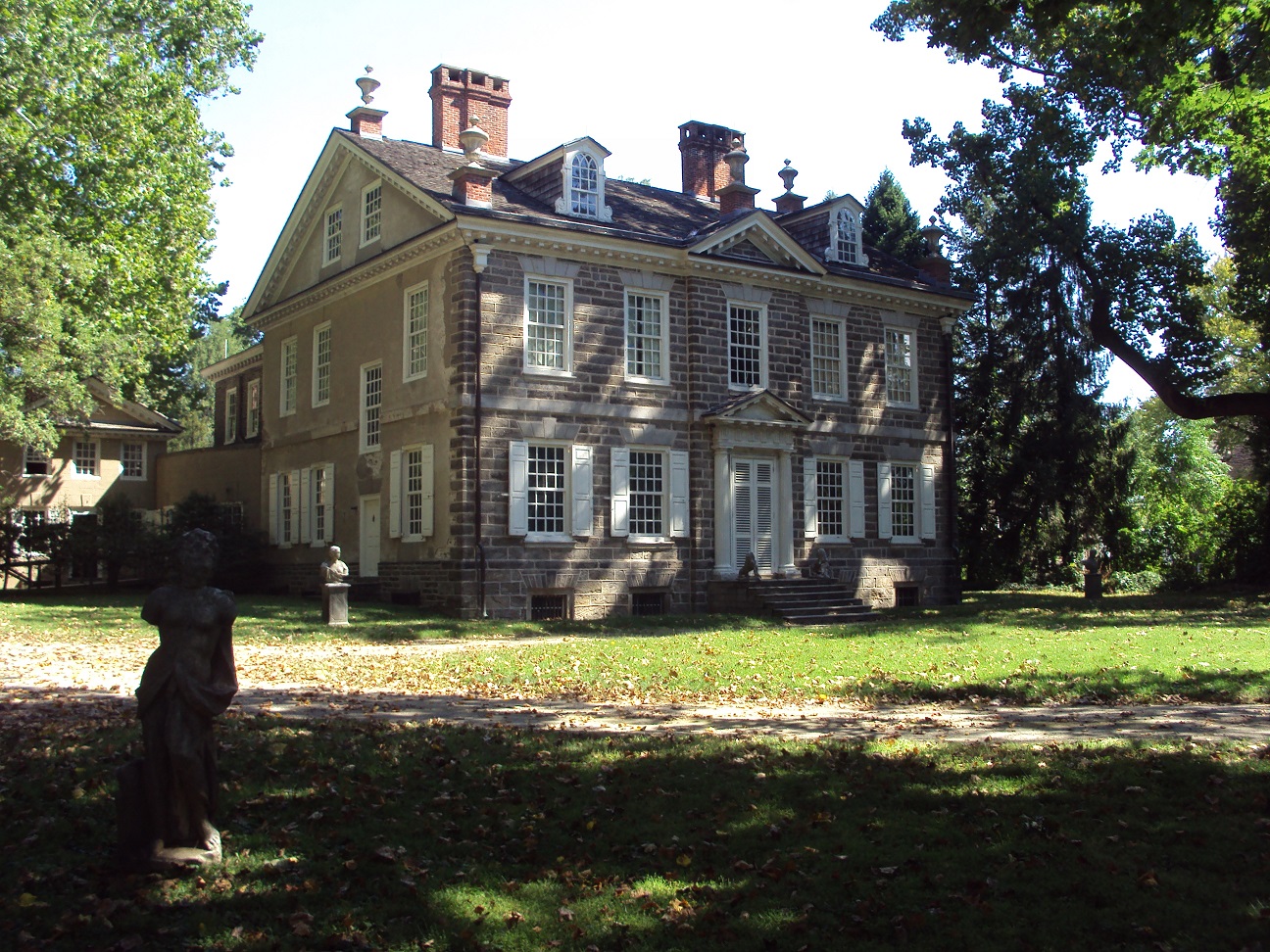
662.58 KB
Note the statuary on the lawn in the photo above - it is original and the damage was done during the Battle of Germantown!
Image Insert:
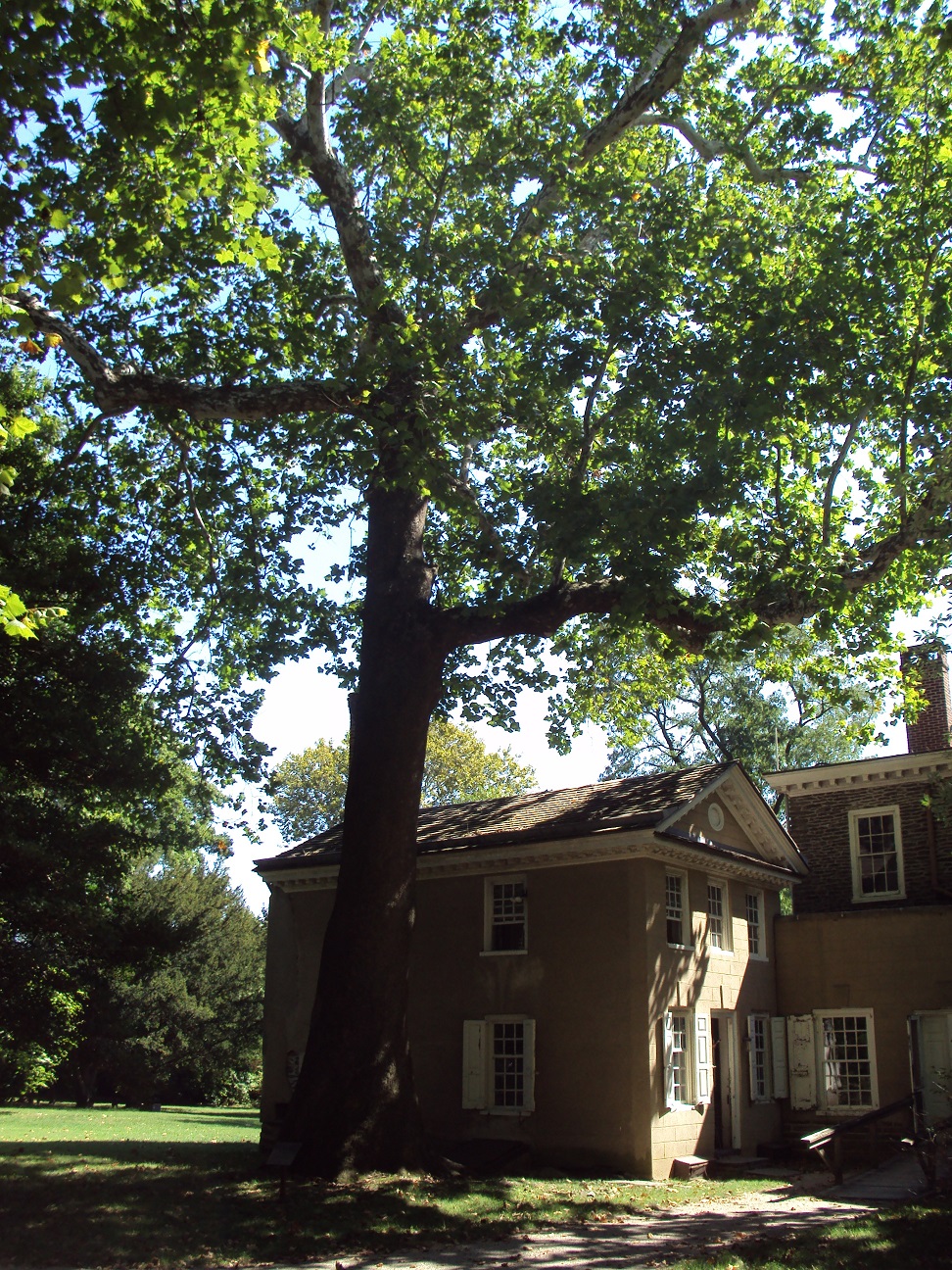
845.92 KB
Cliveden boasts its very own witness tree seen here beside the house and attested to by the historical marker below.
Image Insert:
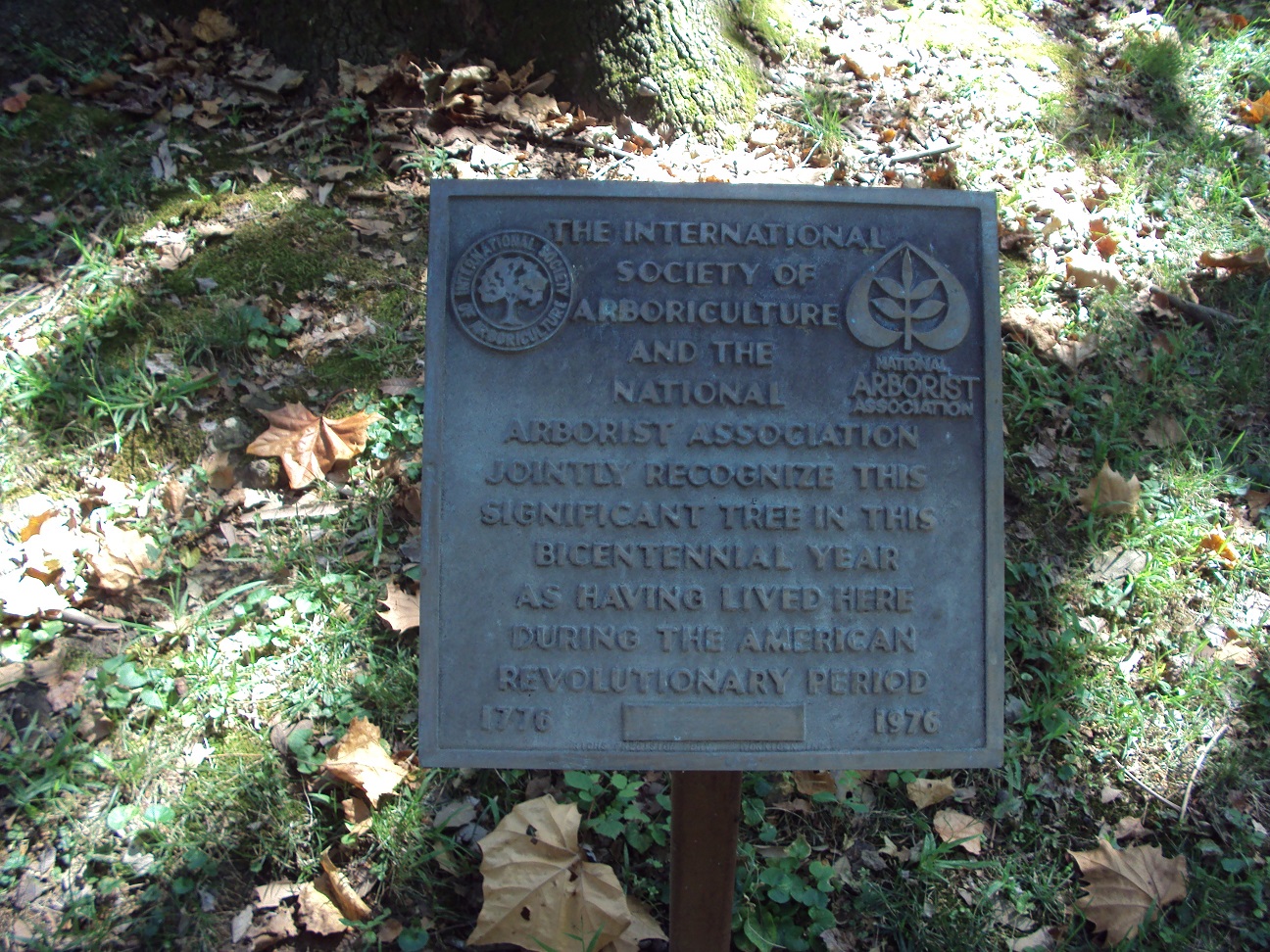
682.39 KB |
report to moderator  |
|
| |
 Topic Topic  |
|
|
|
| The Mohican Board! [Bumppo's Redux!] |
© 1997-2025 - Mohican Press |
 |
|
| Current Mohicanland page raised in 0.14 seconds |
 |
|

![The Mohican Board! [Bumppo's Redux!] The Mohican Board! [Bumppo's Redux!]](images/wwwboard.gif)






